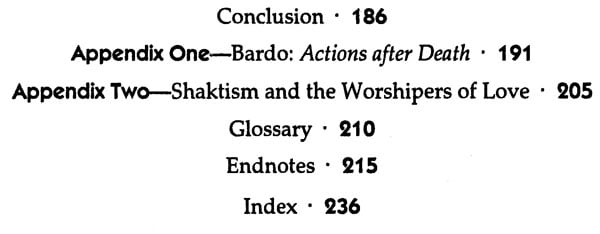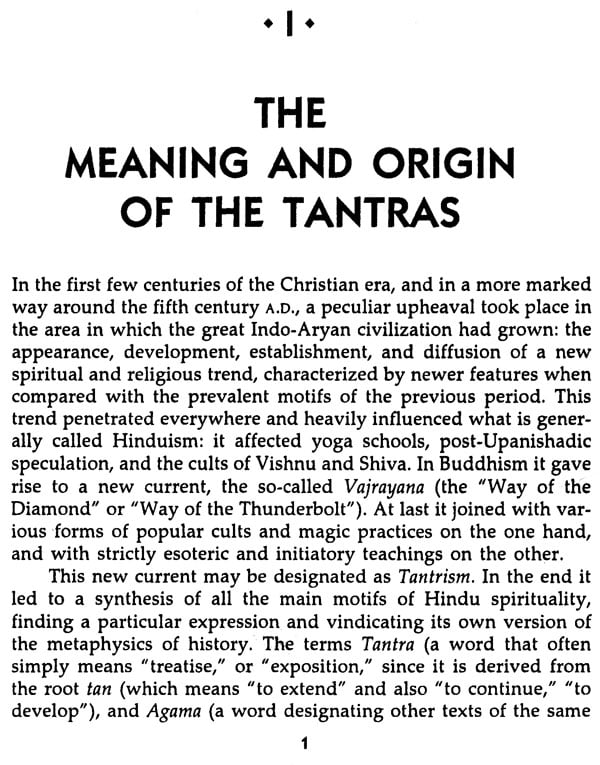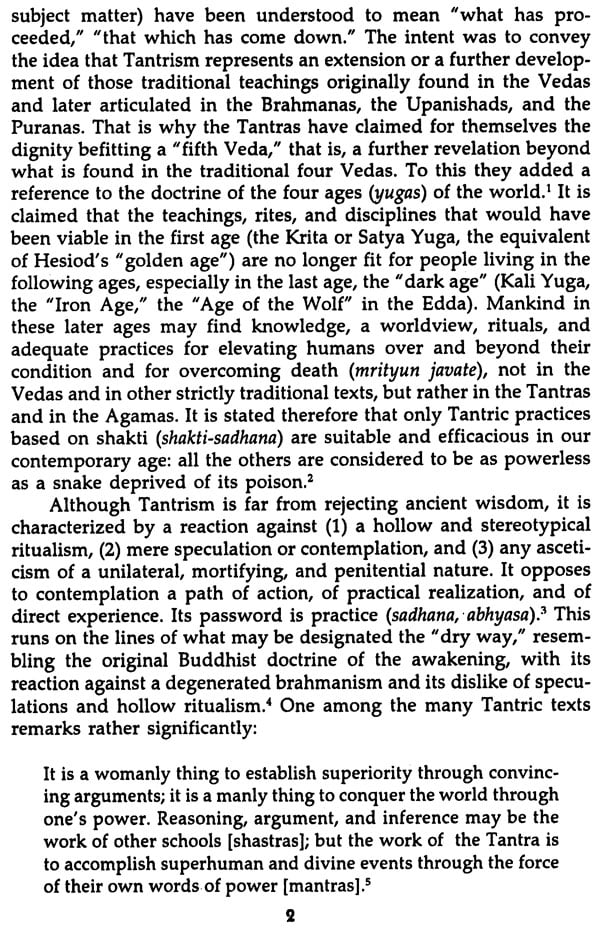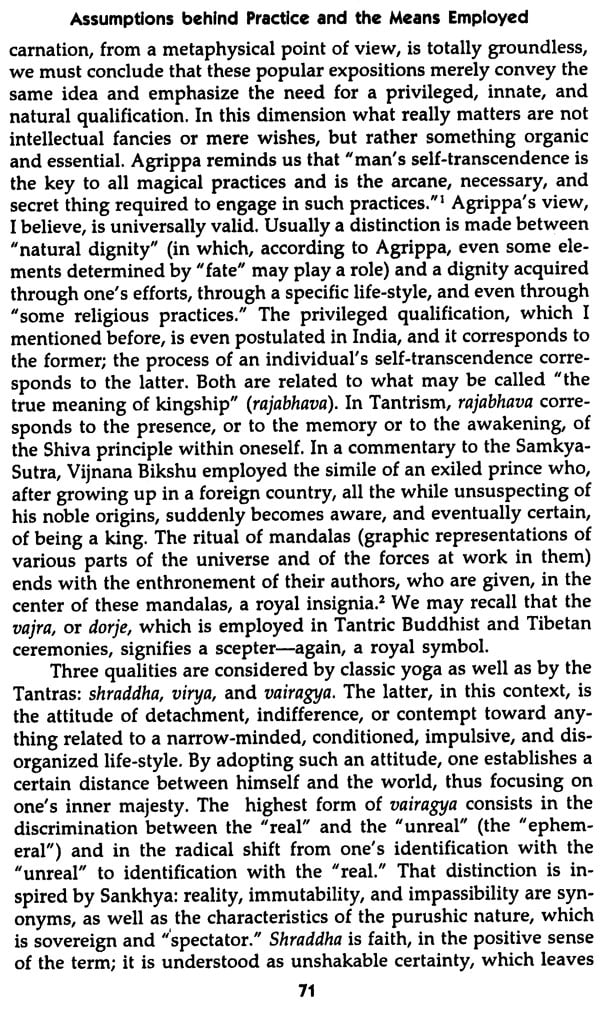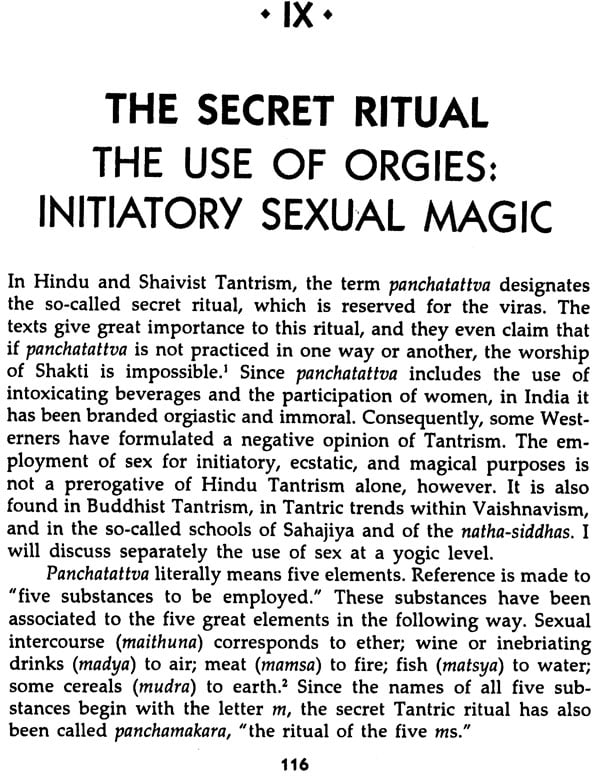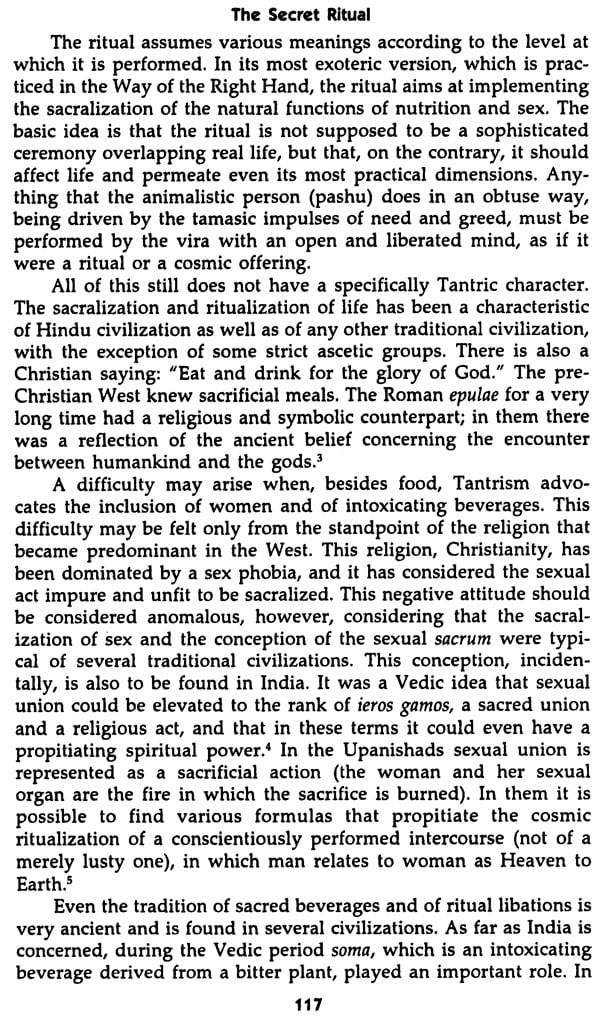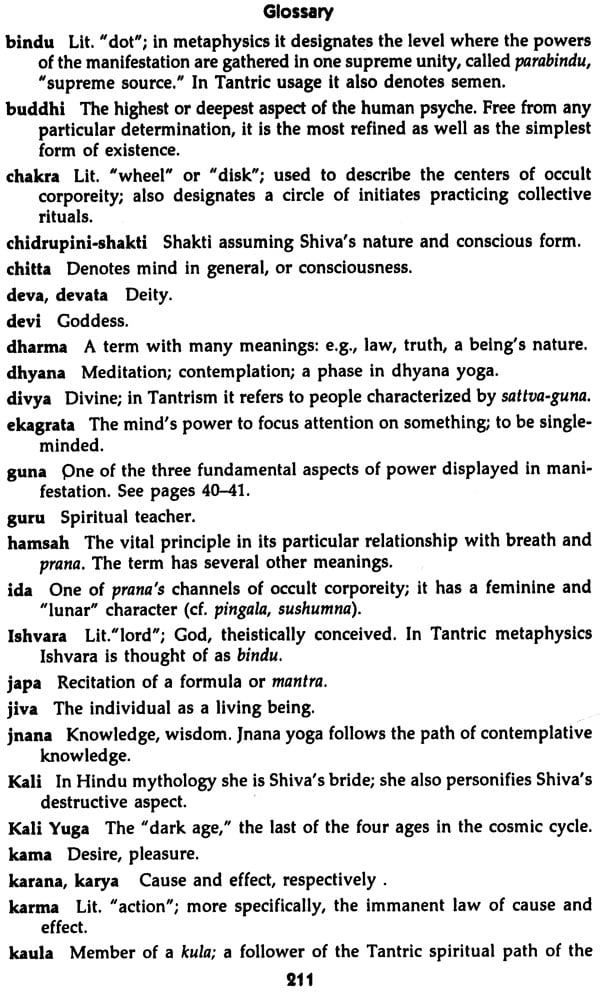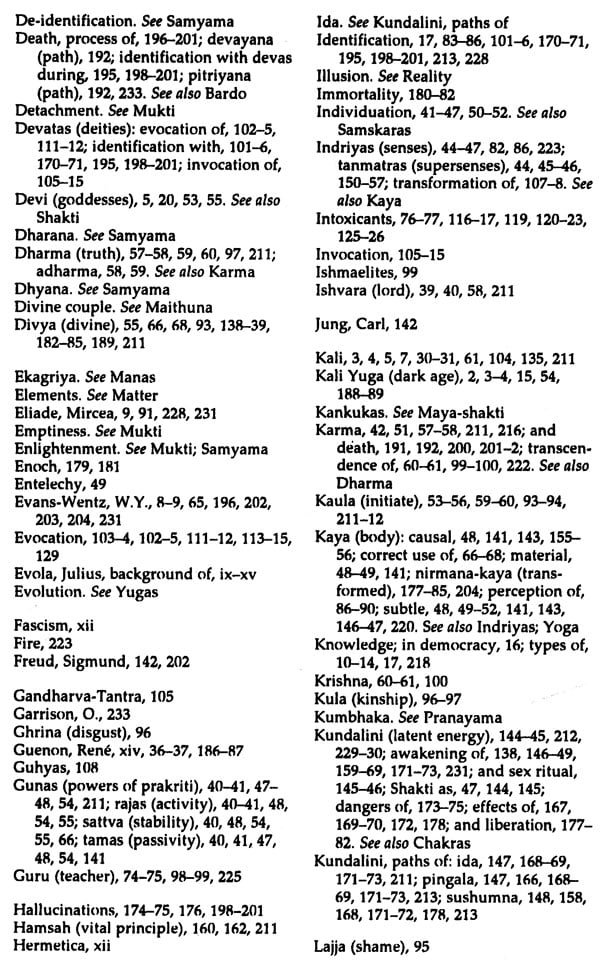
The Yoga of Power (Tantra, Shakti, And The Secret Way)
Book Specification
| Item Code: | NAQ991 |
| Author: | Julius Evola |
| Publisher: | Inner Traditions, Vermont |
| Language: | English |
| Edition: | 1992 |
| ISBN: | 9780892813681 |
| Pages: | 256 |
| Cover: | PAPERBACK |
| Other Details | 9.00 X 6.00 inch |
| Weight | 360 gm |
Book Description
Translated into English for the first time, this book will come I as a surprise to those who think of India as a civilization characterized only by contemplation and the quest for nirvana. The author introduces two Hindu movements-Tantrism and Shaktism-both of which emphasize a path of action as well as mastery over secret energies latent in the body. Tracing the influence of these movements on the Hindu tradition from the fourth century onward, Evola focuses on the perilous practices of the Tantric school known as Vamachara-the "Way of the Left Hand"-which uses human passions and the power of Nature to conquer the world of the senses. During the current cycle of dissolution and decadence, known in India as Kali Yoga, the spiritual aspirant can no longer dismiss the physical world as mere illusion but must grapple with-and ultimately transform-the powerful and often destructive forces with which we live. Evola draws from original texts to describe methods of self-mastery, including the awakening of the serpent power, initiatory sexual magic, and evoking the mantras of power.
Author of Eros and the Mysteries of Love, Julius Evola (1898-1974) was a controversial renegade scholar, philosopher, and social thinker. He has long been regarded as a master of European esotericism and occultism as well as a leading authority on Tantra and magic.
The name of the Italian thinker Julius Evola (1898-1974) is virtually unknown within the American academic community. To the best of my knowledge, only two American scholars have so far analyzed Evola's thought: Thomas Sheehan, who first wrote about him from a philosophical perspective, and Richard Drake, who wrote from a political and historical perspective.'
Considering both the remarkable consistency and spissitudo spiritualis of Evola's thought, and the revival of interest his work has enjoyed in Europe during the past decade, much work needs to be done in North America to bridge this cultural gap. My modest contribution to the popularization of Julius Evola will be limited here to the religious and spiritual implications of his worldview, which so far have been neglected by critics and supporters alike, eager as they are to focus on the political and ideological ramifications of his thought.
Giulio Cesare Andrea Evola was born in Rome on May 19, 1898, to a noble Sicilian family. During his adolescence, while pursuing a high school diploma in industrial engineering, he developed a keen interest in contemporary literature and art. As he recalled in his intellectual autobiography, It cammino del cinabro [1963, 1972, The cinnabar's journey], his favorite pastimes consisted of painting, one of his natural talents, and of visiting the library as often as he could, in order to read works by Oscar Wilde, Friedrich Nietzsche, and Otto Weininger.
When Italy, following the outbreak of World War I, declared war against its former allies Germany and Austria-Hungary, Evola, who did not appreciate this "betrayal," wrote a bold article in a Roman newspaper suggesting that Italy's participation in the war should not have been dictated by nationalistic, democratic, or irredentist concerns. Its publication marked the beginning of Evola's career as an antidemocratic and nonconformist writer.
At the age of nineteen Evola joined the army and participated in the conflict as a mountain artillery officer. An existing photo shows him in his impeccable uniform, with an aristocratically non-chalant look on his face, while on duty at the front on the Asiago plateau, in northern Italy. Though he admitted that he was never involved in significant military operations, his experiences in that mountainous environment, such as climbing, the inner feelings during the ascent, the silence and solitude of the peaks, and the bird's-eye view of the valleys below, made a deep and long-lasting impression on him. He wrote several essays between 1930 and 1942 on what he called the "mystical dimension" of mountain climbing.2 He also gave instructions that, after his death, the ashes of his cremated body be dispersed from the top of a mountain. A team of disciples, led by two local guides, buried them instead in a glacier on Monte Rosa, forty-two hundred meters above sea level.
The first few years of Evola's life following the end of the war were characterized by spiritual restlessness and by an intense search for an ideological self-identity. Evola began a personal quest for ultimate transcendence, which he believed could be found beyond the ethical and spiritual limitations of bourgeois prejudices. That quest, characterized by Evola's contempt for what is "all too human" (to use an expression dear to Nietzsche) and for daily rou-tines, led him first to dada, the artistic avant-garde movement founded in Zurich by the Romanian artist Tristan Tzara. That Evola became a chief representative of the short-lived, canon-breaking Italian dadaist experience. One of his oil paintings of this period, Inner Landscape, 10:30 a.m., is hanging today on a wall of the Na-tional Gallery of Modern Art in Rome.
**Contents and Sample Pages**

